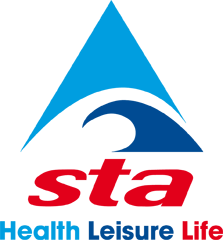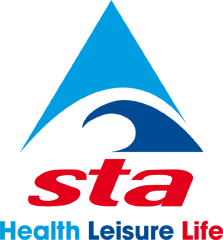What are Reflexes and How do they Aid Baby Swimming?
At the start of the year, I set out to question and understand what movement patterns we were seeing in the pool during our baby and pre-school lessons and to underpin research for a new swim concept – Aqua Sensory. I contacted Paul Beaumont, a Movement Practitioner with a special interest in infant reflexes and Developmental Movement. His knowledge and empathy on building trust with parents enlightened me to research this fascinating subject further.
Infant reflexes are important for swim teachers to recognise for two reasons. Firstly, they can give clues as to the developmental stage a baby is at, and so help us know what the baby might be ready to do in the water. Secondly, we can stimulate some reflexes like the amphibian reflex, to develop the infants swimming and progress them further. Our aim as swim teachers is to create a smooth transition from their first involuntary swim actions to more controlled conscious swimming actions.
We all know that babies have a natural swimming ability from birth; this is because they have a flurry of early movement responses whilst their lower brains are developing. Water provides a unique, buoyant platform, which gently supports them and it is of course a familiar environment to babies and one that allows them to feel safe and secure. But, it also allows them complete access to unrestricted movement patterns and allows their body to explore a wide range of dynamic movements that they couldn’t otherwise achieve on dry land. Whilst we can generalise, reflexes are complex neurological connections and each baby will have their own set of reflex actions and develop their own set of movement patterns in a time frame that is unique to them.
Some reflexes, called primitive reflexes, develop in the womb and they support a babies basic survival e.g. sucking, the Moro reflex (throwing arms back, startle response). When a newborn baby is placed in water they will look like they are swimming. They have an amphibian reflex that makes the hip flex with the knee on the same side so the baby is ‘kicking’ and moving through the water. By approximately 9-12 months of age this reflex starts to fade and the baby has to learn how to kick its own legs. In order to create a smooth transition from the involuntary stage, the focus in class should be on fun games where manual movements can be combined with word association and this is just one area we will be exploring in the CPD.
One of the strongest postural reflexes we see in baby swimming is a righting reflex. This is present at about 4-5 months of age, and can be triggered during back floating. A baby will automatically lift their heads and try to sit up. Therefore, more support should be given by the parent or swim holds like the ‘figure of 8’, where the infant is naturally in a semi-reclined swim position. This will help to reduce frustration, as this stage may last until they are over 12-18 months of age. Back work is an important part of swimming, as it gives infants a sense of their natural buoyancy and often you will find they kick more. We hope to give swim teachers a set ‘swim tools’ to help with this stage, to work with the reflex and not fight against it.
The CPD will take place Sunday 10th November in Northampton and will explore all the common reflexes we see in baby swimming and how by understanding them, we can become more effective swim teachers. For more information, please contact Jo Wilson on 07968 015292 or email jo@littlesplashers.co.uk. This STA seminar will be worth one CPD Point.
CPD Sources of Information:
Produced in consultation with Paul Beaumont, Somatic and Developmental Movement Specialist. www.paulbeaumont.net
Baby and Pre-School Resource Manual – STA
Reflexes, learning and behaviour, A Window, Into the Child’s Mind – Sally Goddard (2005).
How to Teach, Your Baby to Swim – Francoise Freedman (2001)
- Categories
- Swimming Teaching


